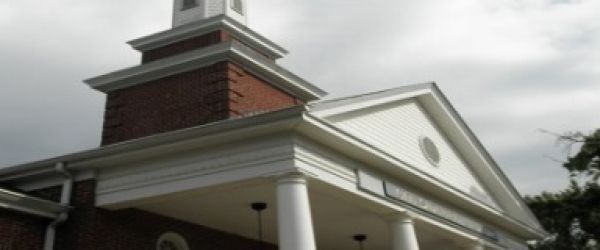
Small church, big impact (part 1)
Can a small church have a global involvement when they lack financial resources? Yes, if they are willing to change their paradigm of missions.
Glenside Bible Church (GBC) is a small church in a middle-class suburb of Philadelphia. They supported a large complement of missionaries — 28 in the 1980s. A number of those missionaries had been sent out from GBC or nearby churches over the years, and the church loved them, but their involvement was largely limited to personal visits from the missionaries and to giving money consistently. Supporting missionaries was just another one of the many things the church did.
Pastor John Kless came to GBC in 1979 fresh out of seminary. The church had been through some hard times, but believed that they should be involved in missions. Their global involvement and understanding of unreached peoples has been a journey.
The journey begins
In 1995, one of the elders gave Pastor Kless a copy of Mission Frontiers from the US Center. He began to read and was intrigued. For the first time, he read about God seeing the world in terms of people groups instead of countries.
This set Pastor Kless on a path of intentional learning. He discovered a new-to-him concept that God actually has a plan for all of human history, that he is on a mission to reach all peoples on earth with the gospel, and bring worshippers to the throne of God from each! He learned that 1/3 of the earth’s population, billions of people, lived in people groups that were still unreached, where there was NO opportunity to hear the gospel.
This led Pastor Kless to a personal awakening. In one of those early issues of Mission Frontiers, a missionary, Stan Yoder, told how he had come home from serving 10 years among the Yalunka people in Africa to a new ministry in the US. When he went back to his home church and talked with the missions committee, he was horrified that none of them were praying for the Yalunkas. He wrote, “They had adopted us, not the Yalunkas.”
When Pastor Kless read that, it was as if God pointed his finger and said, “That’s YOU! That’s your church!” He realized that though the church faithfully supported missionaries, they couldn’t have cared less about the people those missionaries were trying to reach, let alone about the unreached peoples of the earth. Pastor Kless knew this had to change and that he had to change. He began to share freely what he was learning from the pulpit and with the missions committee. They learned together and God worked!
One key step
So, how did GBC change their mission involvement? They took one key step toward unreached people groups. In the 1990s, the AD2000 movement was making lists of unreached people groups. Churches were urged to adopt an unreached people. The GBC committee decided to adopt an unreached people where they did not support any missionary so that they would learn to love an unreached people instead of their own missionary.
Adopting the Kyrgyz
They set out to choose. Pastor Kless says, “We’re pretty simple people, really.” A year or two before, they had a missionary visit who served among a remote people in the mountains of Central Asia in a country they’d never heard of, Kyrgyzstan. The Kyrgyz people were on the Joshua Project list! Here was a people with whom the church could communicate and receive information. They did a little dial-up internet research and got a reply from someone who actually knew something about the Kyrgyz people.
They learned there were about four other churches in all of North America (at that time) who were involved in work in Kyrygzstan. Now they had at least one other church willing to help them learn more about the Kyrgyz. They found out a non-governmental organization was beginning to gather all parties interested in Kyrgyzstan into a loose partnership.
“So we did the obvious: We chose the opportunity God had put in front of us,” Pastor Kless says. This basic principle has led them into all the involvements they have today among unreached peoples. They took the idea to the elders and the whole congregation. In November of 1996, they all stood and pledged themselves to do everything within their power to see the church planted among the Kyrgyz people.
How did the congregation get involved? Their first problem was that as a small church, they had no money to invest in this new venture. “But you don’t need money to learn to love,” laughs Pastor Kless. He had read that one good way to help a people group was to start a newsletter to generate prayer for them. He thought, “I can do that!”
Since they had found it difficult to get solid information about the Kyrgyz, they figured they could become an information repository for other churches interested in the Kyrgyz. It didn’t cost anything but time! GBC launched The Kyrgyz Chronicle, starting with their church bulletin and a mailing to a few contacts. It grew to a monthly circulation of hundreds.
Face to face
Pastor Kless knew that sooner or later someone in the congregation would end up traveling to Kyrgyzstan, but he didn’t think it would be him. This Pennsylvania pastor was not a world traveler, but in April of 1997 he was invited to join a Central Asian Partners team of visiting professors, all expenses paid!
“I was scared to death,” he said. “I thought — former Communist country, soldiers with AK-47’s at the offramp, are they gonna keep me?” But it was life-changing. The church adoption project went from being about “an unreached people” to being about folks the pastor had met in person. That experience propelled the congregation forward and enabled them to prepare and send their own team of 14 in 1999. Individual members and teams from the church have been back repeatedly since then.
After 10 years, the church sent a nurse to Kyrgyzstan for 3 years. Besides trips and teams, the people of the church have been involved in many ways: email penpals, Kyrgyz pastors in GBC’s pulpit and in homes, and various collection projects.
Sustaining the work
How has a little church like GBC sustained this for so long? Numerous ways.
• They take people each year to the North American Kyrgyzstan Partnership meeting and have hosted this meeting.
• The church puts the Chronicle newletter in the bulletin once a month.
• Pastor Kless moderates several Kyrgyzstan email information lists.
• In 2008, on a trip to Kyrgyzstan, Pastor Kless met all the pastors from the Kyrgyz Alliance of churches. They told him they needed “spiritual fathers.” So, using Skype and a translator, he has called a dozen or so of them each week on a rotation to pray with them. The nurse who served in Kyrgyzstan does the same thing with their wives and other female leaders.
• The church gave Central Asian Partners a “virtual office” in the GBC building.
• There’s a “Kyrgyz Corner” in the bulletin every Sunday and the Wednesday prayer sheet.
But the Kyrgyz are only one part of Glenside Bible Church’s journey.
Click here to read more about how this church grew to embrace God’s mission to reach the lost worldwide.
• Find resources for developing a passion for the Great Commission at your church.
• Subscribe to SENDING Well, our free newsletter full of encouragement and resources to help your congregation engage with missions and send missionaries who thrive.
Additional Posts





